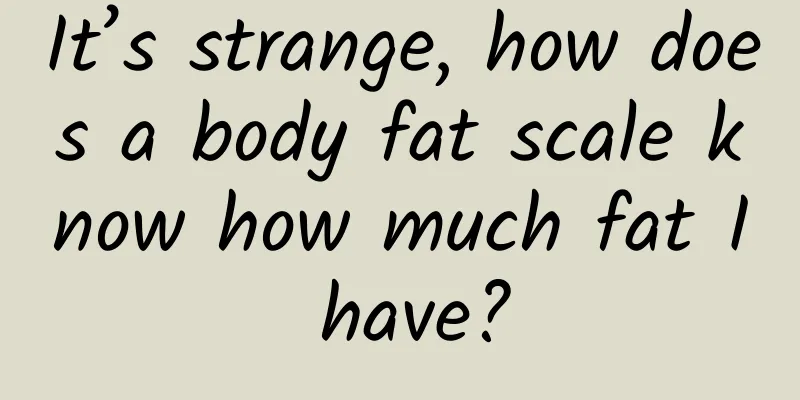When is a second confirmation required? I have sorted out the common application times and methods

|
Second confirmation is very common in product design. Today I will tell you when and how to apply it. What is secondary confirmation?The main purpose of double confirmation is to confirm the user's choice again when making a choice, so as to avoid deviations in the operation results due to erroneous operations. Double confirmation is actually a design that interrupts the user process and is only a compromise solution. Therefore, whether to choose to use double confirmation requires weighing the pros and cons from multiple factors.
The role of secondary confirmationIn fact, the secondary confirmation has three functions for users:
But we should look at everything from a dialectical perspective. From the perspective of experience, ensuring smooth processes and keeping users in a smooth and silky state is what product design pursues. From the product perspective, secondary confirmation is also one of the potential factors affecting potential conversions. But from a practical business perspective, before helping users avoid greater losses, disturbing users to actively secondary confirm the operation content and being responsible for it is actually a consideration of choosing the lesser of two evils. Although double confirmation can avoid certain risks, abusing double confirmation or simply using pop-up windows to ask users to confirm/cancel the process will disturb users. The consequences of abuse or improper use are:
Second confirmation timeUsers need to make various decisions when using the product, especially B-side customers who face additions, deletions, modifications, and inquiries every day. If the consequences caused by some of the operator's instructions require users to spend a lot of money to recover, such as submitting an unfinished or unchecked form, deleting important data, etc., in order to reduce or even avoid misoperation of important data or misoperation of important operations, we need to ask users to confirm again when necessary and appropriate: Do you want to do this? As for when a second confirmation is needed, we can actually consider the irreversible dimension brought about by the current operation + the severity of the error results, as well as the frequency of occurrence. 1. For severity: low-cost operationFor low-cost operations, secondary confirmation may not be required. For example: In terms of operation frequency: entering a form, creating a new form, and viewing details are the most basic operations, so there is no need to set up secondary confirmation. Toast prompt Undo reminders are generally used for operations that are frequently performed and easy to roll back. For example, after deleting or moving files in an online disk, a toast prompt will usually pop up to inform the user that the operation was successfully performed, and display an "Undo" button so that the user can quickly roll back in case of an error. 2. For severity: Medium cost operationFor example, some daily operations without clear consequences may also lead to serious consequences, but not to irreversible consequences. Therefore, we can set up a second confirmation before serious consequences occur, confirm and remind the upcoming results and ask again. 3. For severity: High cost operationWhen the operation will have serious or irreversible consequences and the user needs to think carefully, the operation risks should be foreseen in advance, the process should be blocked and confirmed again. For example, when deleting an account, modifying data, or submitting/sending important content, users usually fill in a lot of information. If they do not confirm it twice, it is easy for them to submit the wrong content by mistake. For example, when filling in the reservation information for travel, the documents need to be checked in real time, and they need to be confirmed again when submitting and saving. Secondary confirmation when the C-end user's operation will bring losses, such as Pinxixi's activity reminder; use loss aversion to guide comments. These are all psychological ways to retain users. 4. Avoid using secondary confirmation scenariosWhen guiding users to convert, secondary confirmation will interrupt the entire user purchase process. If operations are frequent and the impact of erroneous operations is smaller than the operating costs, you can consider not using secondary confirmation. Second confirmation form1. Pop-up/toolbar remindersThe essence of pop-up windows and toolbars is the same, both interrupt users to confirm repeatedly, but the display format is different. And the confirmation button is placed on the side that users are not used to. 2. Withdraw reminderOften appears on the web, and can be withdrawn within a certain period of time after deletion 3. Trash CanThis is the most common fault tolerance mechanism. Even if the file is deleted, there is a container transfer platform that carries the deleted file. 4. Ask multiple timesMultiple inquiries are a way of repeated confirmation, which asks users to confirm through continuous warnings. For example, when restoring data on an Apple phone, users will repeatedly enter the lock screen password and the ID password before the data can be erased. 5. Enter the name of the operation objectAfter deleting a directory, Yuque will ask the user to enter a series of fields. The cumbersome steps can help users avoid operating errors to a large extent. 6. Cooling-off periodAfter canceling your account, the service account will actually be retained for a period of time, and you can recall your account by reapplying. How to design secondary confirmation from the perspective of experienceEven if we use secondary confirmation in product design, we can still focus on details to improve the experience. 1. Optimize micro copyFor the secondary confirmation function, whether from the perspective of information acquisition or improving user experience, we must pay attention to reducing user frustration. Here is a good formula for everyone: reason for interruption + what action is required from the user + the consequences of the action + unambiguous button copy (note that it should not be too long!!!) Ambiguous case:
2. Avoid ExcessWhen designing, we still follow the principle of "minimize use if it can be solved through processes" and let the system automatically save and check as much as possible. 3. Stay consistentThe secondary confirmation in the same product should be kept consistent, and the number, text, and position of the buttons should comply with general usage specifications. 4. Fit the imageThe copywriting and interface elements of prompts/instructions/warnings should be consistent with the product image and purpose, and emotional factors can be used flexibly. 5. Pre-processingAfter confirmation, relevant instructions can also be provided to the user, such as informing the user of the remedy measures for operating errors (re-editing, recycling box - PC trash can, email trash can, photo album recycle bin, etc.). Asking users to confirm in advance is generally much cheaper than trying to recover after it happens. This is the value of secondary confirmation. |
<<: 6 tips to quickly improve UI design effects
>>: Huawei's new patent is public: It can avoid being attacked by malicious QR codes
Recommend
Why choose 400 phone? How does an enterprise apply for a 400 telephone number?
Nowadays, many companies are using 400 telephone ...
On a budget? 6 Experiences in Selecting and Optimizing Channels for Channel Promotion
The core of APP promotion is to calculate the inp...
Summary of Common Methods for Custom Controls
[[183466]] In addition to the measurement, layout...
A complete set of brand planning and promotion!
The 21st century is the Internet age. People'...
Top 10 New Media Moments of 2016
In 2016, the new media industry is still hot. Som...
Tesla's alternative "PUBG", players can enter the game to experience Model Y's autonomous driving
In the past few years, Tesla has been committed t...
That Day丨It turns out that Yang Liwei flew into space 20 years ago!
20 years ago today A glorious page in the history...
Why did Qianjiang cancel the Notice No. 26? What happened to Qianjiang canceling the Notice No. 26?
According to the WeChat account "Qianjiang R...
Ali Health Research Institute releases "Double 11 Family Health Reserve Insight Report" to outline new trends in family health consumption
During this year’s Tmall Double 11, health produc...
Drools rule engine practice
Part 1 Rules Engine Rule engine: The full name is...
Understand the new marketing benchmark in 1 minute and create high added value with low cost
Low-cost cases can bring huge returns because of ...
5G mobile phones have not been used yet, but chip vulnerabilities have already emerged
If the global chip shortage continues, spreading ...
Letter from CDC officials to people who have not been vaccinated against the new coronavirus
Dear People, Hello! In recent months, some provin...
The beautiful sunset can actually be predicted. When do you think it will appear again?
On May 14, the news that "a beautiful sunset...
Photos from the sky! The first batch of 10 images from the Science Satellite 1 were officially released in Beijing
On December 20, 2021, the first batch of 10 image...









